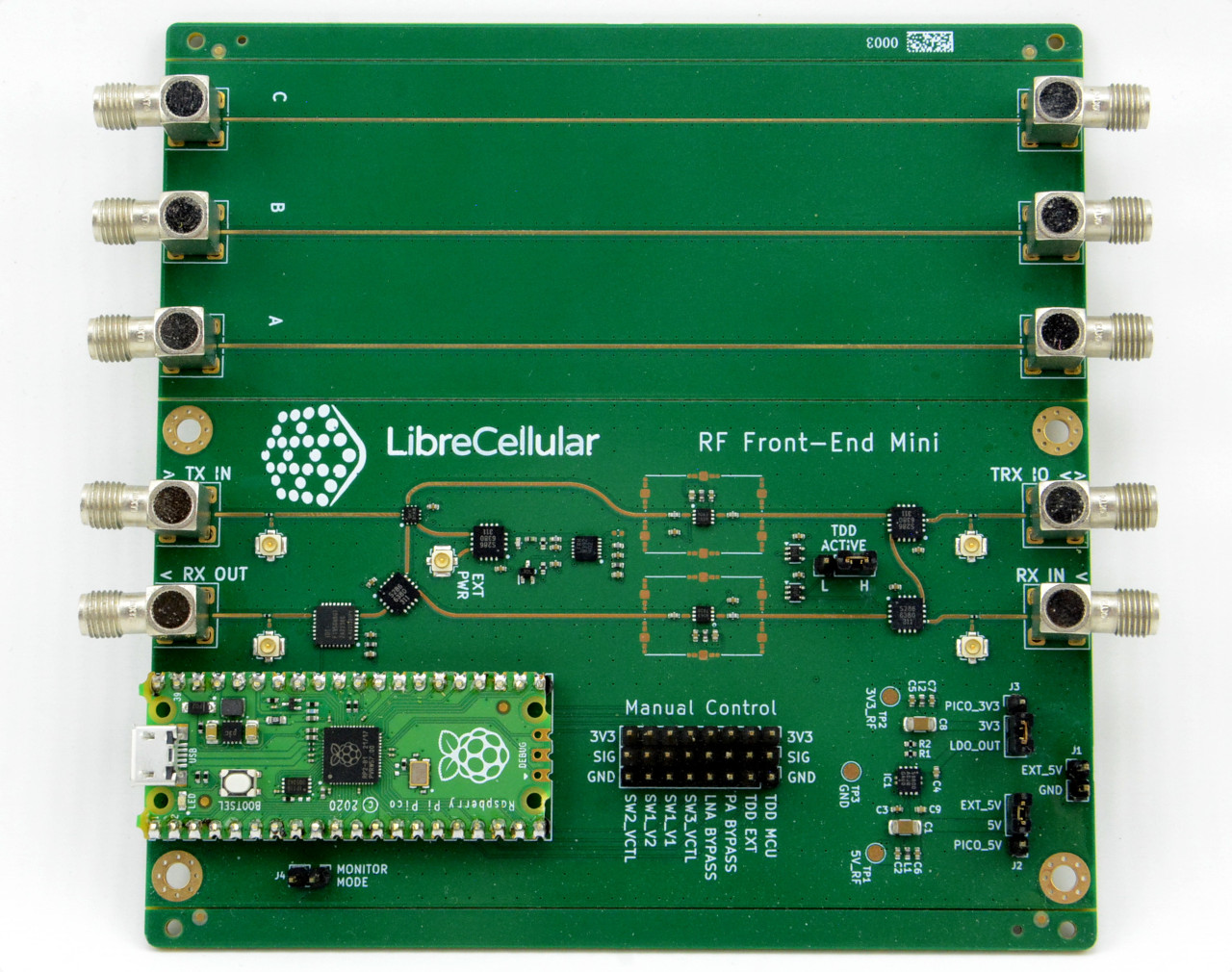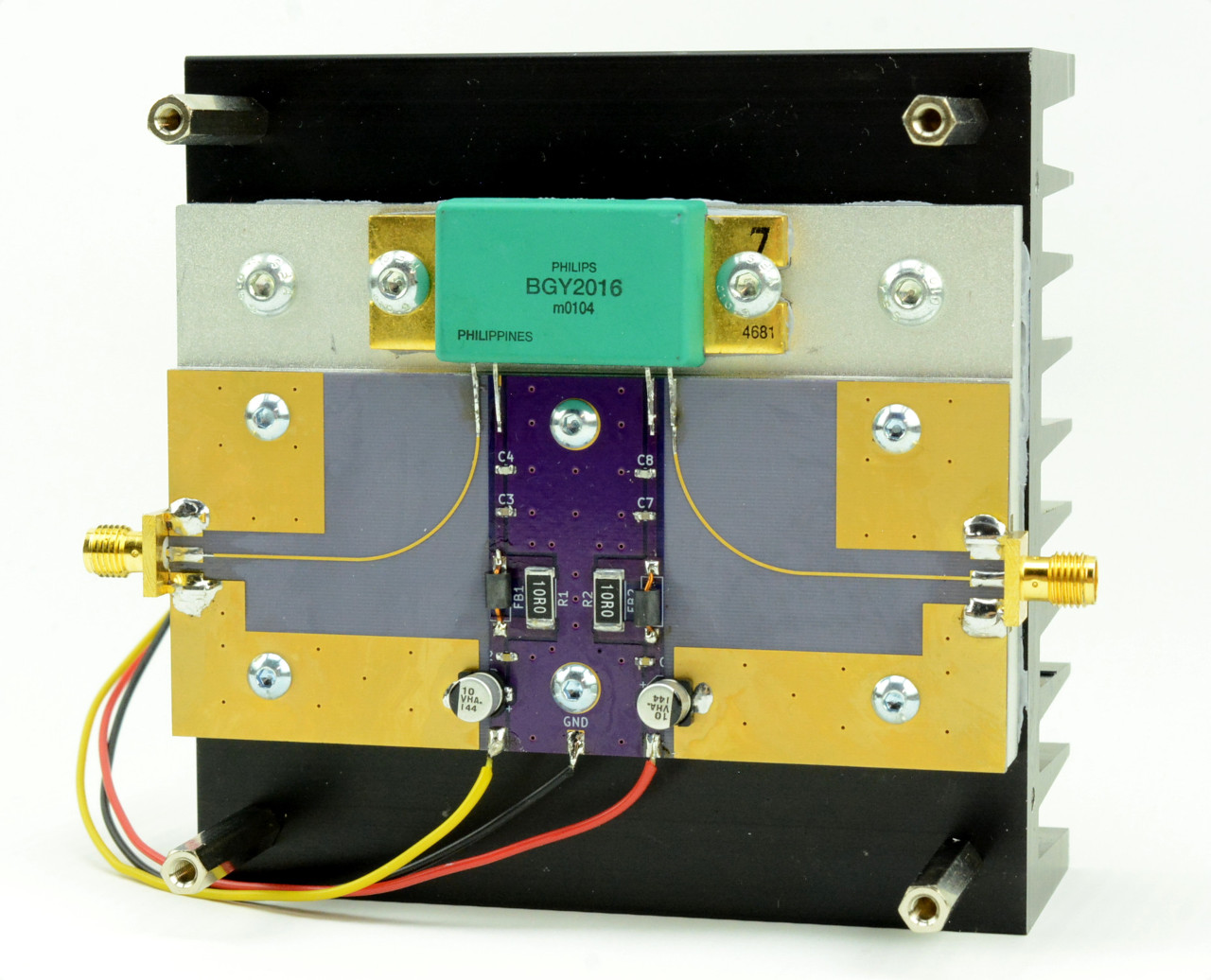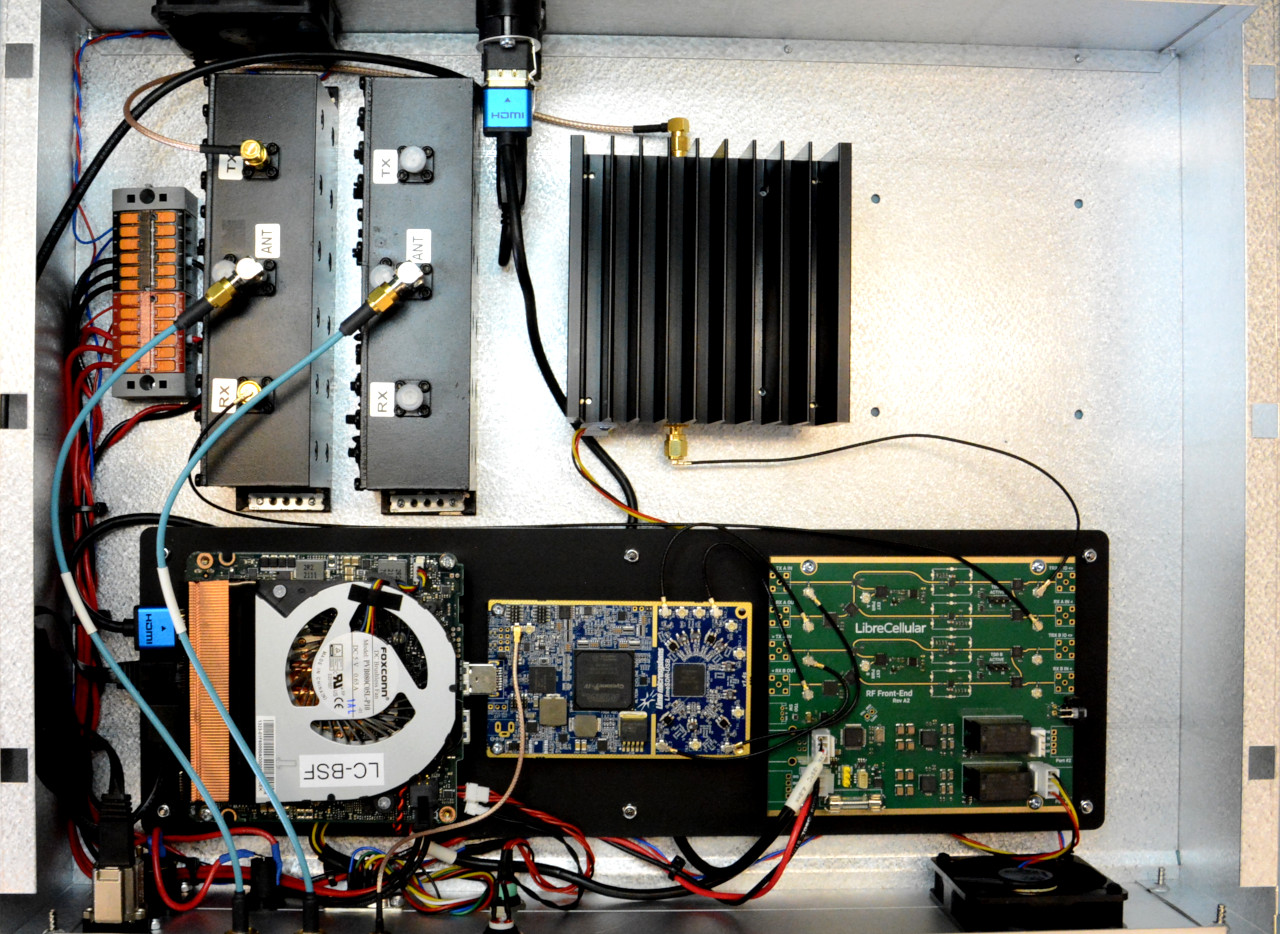Numerous hardware updates, CSRAN1 build, easier configuration and a technology primer.
Recent work has been focused on getting the goal of having a complete reference hardware design, featuring an integrated RF Front-End and optional final power amplifier for medium power licensed sites, plus fully automated configuration tooling and support materials.
Hardware
Over the past months we’ve been busy testing hardware and making various improvements to a number of designs, and as part of which we’ve also ended up creating a new design.
RFE RevA1
Last year we introduced the first revision of the LibreCellular 2×2 MIMO RF Front-End (RFE). The RFE integrates all manner of useful features, such as power amplification in the transmit paths, low noise amplifiers (LNAs) and digital controlled RF step attenuation in the receive paths, voltage and RF power monitoring, TDD switching and more.
When we came to characterise the RFE we came to the conclusion that there was room for improving the RF performance, given that the gain we were measuring when switching amplifiers out of bypass was somewhat below the stated figures for the devices used.
Hence a design review followed and improvements to the coplanar waveguide (CPWG) transmission lines were identified. However, rather than immediately creating a new revision of the 2×2 MIMO RFE, we decided to first create a single channel RFE to test this out.
RFE Mini RevA1
 The original motivation for the RFE Mini was to have a reduced bill of materials (BOM) cost and easier to debug version of the full size RFE. With the latter in mind it was decided to use a Raspberry Pi Pico for control instead of an STM32 MCU, since Python test scripts could be much more quickly put together and iterated. In addition to which a block of pin jumpers were added to enable manual control of RF switches and amplifiers.
The original motivation for the RFE Mini was to have a reduced bill of materials (BOM) cost and easier to debug version of the full size RFE. With the latter in mind it was decided to use a Raspberry Pi Pico for control instead of an STM32 MCU, since Python test scripts could be much more quickly put together and iterated. In addition to which a block of pin jumpers were added to enable manual control of RF switches and amplifiers.
For the very first revision of RFE Mini it was also decided to add three different, albeit identical length CPWG through traces, so that we could compare performance.
With RFE Mini Rev A1 assembled we were then able to confirm that the proposed changes did indeed result in a reasonable improvement in the RF performance. However, upon further review it was decided that there was room for additional improvements in the form of better RF amplifier decoupling and much more via stitching.
Finally, we should note that an RFE Mini RevA2 is in the works and this will have the CPWG test lines removed, along with the pin jumper block. With the idea that this might provide a useful reduced cost option for those who only require a single channel. Though the design has not been finalised as yet and more on this next.
RFE RevA2
 The 2×2 MIMO RFE was subsequently updated to incorporate the CPWG improvements tested with RFE Mini, along with improved RF amplifier decoupling and via stitching, plus some other smaller changes. Boards were assembled and when it came to measuring the RF and in particular amplifier performance, we then found that this was much improved and close to the expected figure.
The 2×2 MIMO RFE was subsequently updated to incorporate the CPWG improvements tested with RFE Mini, along with improved RF amplifier decoupling and via stitching, plus some other smaller changes. Boards were assembled and when it came to measuring the RF and in particular amplifier performance, we then found that this was much improved and close to the expected figure.
However, when conducting further tests another issue was unfortunately discovered, in that the receive path had very high insertion loss unless a switch in the transmit path were misconfigured. So we have another issue to resolve and one which was discovered rather late in the day. Should a fix involve further hardware updates this will be tested first with a new RFE Mini revision and following which the 2×2 RFE design will be updated.
Band 3 Medium Power Amplifier
The Band 3 Medium Power Amplifier (B3MPA) design was updated to extend the PCB to the edges of the 100mm wide heatsink used, such that SMA connectors would still be accessible with a screening can fitted. This also meant updating the aluminium block/pallet which the PCB sat on.
The updated design was assembled and basic testing carried out. Also testing the PA with a supply voltage of 24V instead of its maximum of 26V, since the CSRAN1 system is designed to operate on a much more convenient 24V supply and we wanted to avoid having additional power supplies/converters just for the PA. In testing with a slightly reduced supply voltage it was found that the gain was reduced by approximately 1dB, which is a sufficiently small compromise.
CSRAN1 Assembled
 An enclosure for the CSRAN1 design previously completed was fabricated by a contract manufacturer, with custom cable assemblies made up and components fitted.
An enclosure for the CSRAN1 design previously completed was fabricated by a contract manufacturer, with custom cable assemblies made up and components fitted.
This includes an RFE which is configured for internal use, with U.FL Rf connectors fitted instead of SMA, along with vertical launch DC and USB connectors.
A single B3MPA module is fitted at present and full system characterisation will commence once the remaining RFE issue is resolved.
RFE Firmware and GUI
An issue was discovered with the RFE firmware whereby this periodically resulted in USB timeouts and the MCU hanging due to commands taking too long to complete. This led to a major rewrite of the firmware in order make command parsing much more robust. Following which the Python control GUI was also updated accordingly.
The RFE Mini is not as yet supported by the main firmware and GUI. However, test Python scripts have been published and the intention is to eventually be able to build the main C firmware for either the 2×2 RFE with an STM32 target, or RFE Mini with a Raspberry Pi Pico.
Ansible Collection
Back in December we published a set of Ansible playbooks which automated the task of provisioning all the various Docker containers and configuration for a complete network comprised of HSS, EPC, IMS and eNodeB. However, the playbooks did not provide support for easily configuring custom parameters and notably things such as a PLMN ID, which is configured in many different places spanning DNS/BIND, HSS, EPC and IMS.
We are pleased to report that we’ve now published a LibreCellular Ansible collection, with roles for the various subsystems and which makes it much easier to configure custom parameters. Thanks again to Supreeth Herle, who provided the inspiration for the collection, along with the base configuration used, and of course the PyHSS, Open5GS, Kamailio and srsRAN 4G developers.
Technology Primer
Finally, it became apparent to us that cellular network technologies can be somewhat daunting to the uninitiated, with many moving parts, a whole lot of configuration and seemingly never-ending acronyms. As such it was decided to put together a technology primer, which in no way attempts to be a comprehensive guide, but hopefully provides sufficient information for those new to the technologies involved to more quickly get up and running with their own network.
Next Steps
The next steps include resolving the outstanding RFE issue and if need be having new boards assembled. Following which characterising this and a complete CSRAN1 system which incorporates an RFE board, with and without a B3MPA in the transmit path.
The LibreCellular RFE and RFE Mini have been developed as a collaboration between AB Open and Ordinatra Minima. This work was funded through the NGI0 Entrust fund, established by NLnet with financial support from the European Commission’s Next Generation Internet programme, under the aegis of DG Communications Networks, Content and Technology under grant agreement No 101069594.

